For many mountain bikers, the mere mention of ‘power meters’ is enough to make our eyes glaze over. As Rachel Sokal discovered though, there’s a bit more to these 2INPower cranks from Rotor.
It might be a bit odd to start a review of the only two-sided MTB power meter by talking about a chainring but that’s exactly where Rotor started out with its development.
Rotor was the first company to bring oval chainrings to the market (successfully that is, anyone recall Shimano’s ill-fated Biopace system?) and their power meter followed as a way to accurately measure the ring’s effect.
The concept of an oval chainring is that it effectively reduces in size at the weakest point of the pedal stroke, and increases at the strongest. This means that your legs have most to do when they’re most effective and least to do when they’re in their weakest position. The theory is that this will reduce fatigue and increase power output compared to riding a round ring.
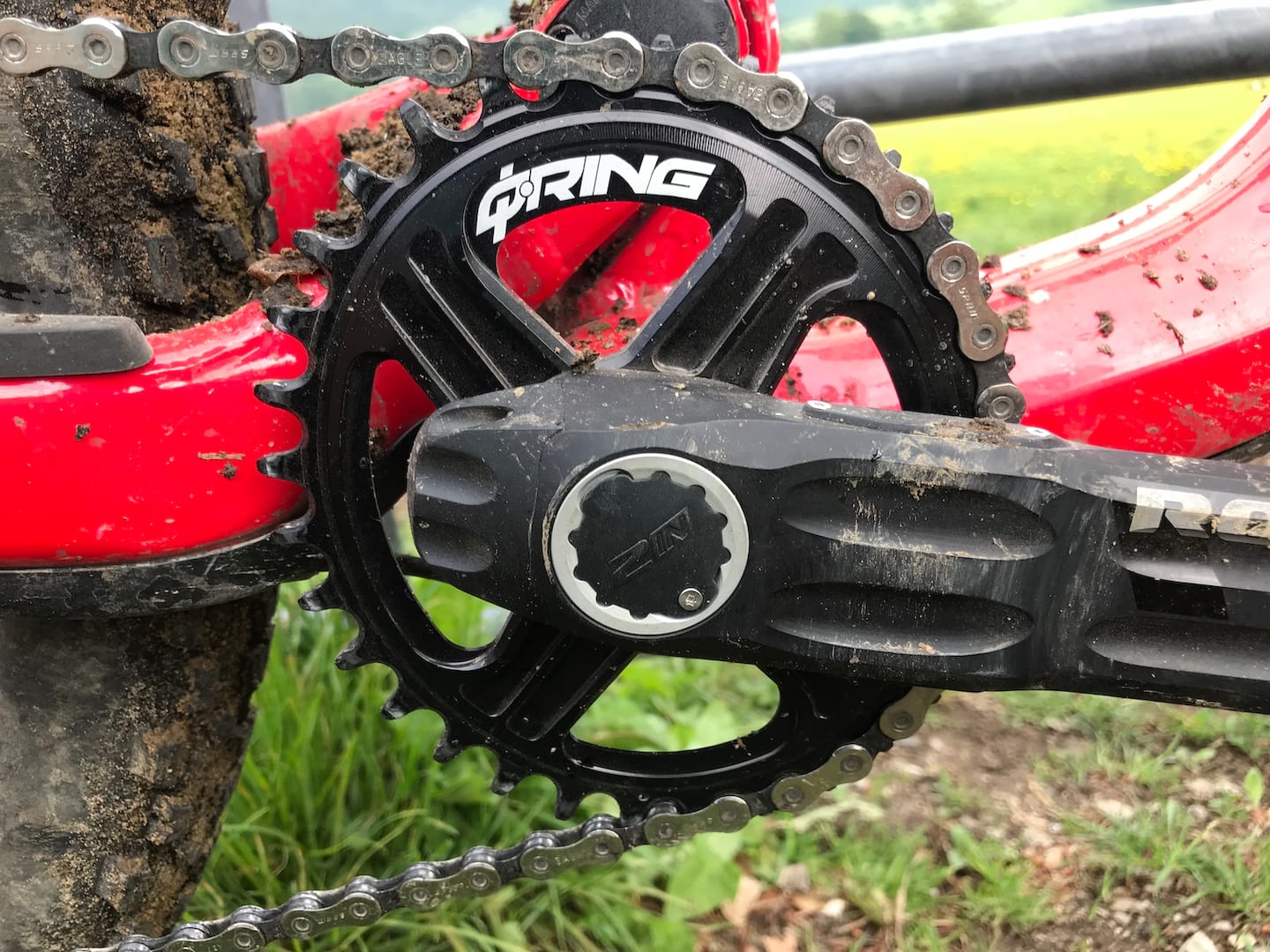
The majority of oval chainrings have a fixed orientation due to their crank mounting. But of course different riders don’t have the same pedalling dynamics so only if you’re dead-on average will your strongest and weakest points reflect the shape of the ring.
To address this, Rotor’s chainrings are designed that their orientation can be adjusted – either by a direct mount fixing or multiple positions to mount to a spider – to match your pedal stroke. Whilst you can do much of this by feel (an optimally positioned oval ring shouldn’t feel oval) Rotor’s power meters were developed to calculate the best position with a lot more accuracy.
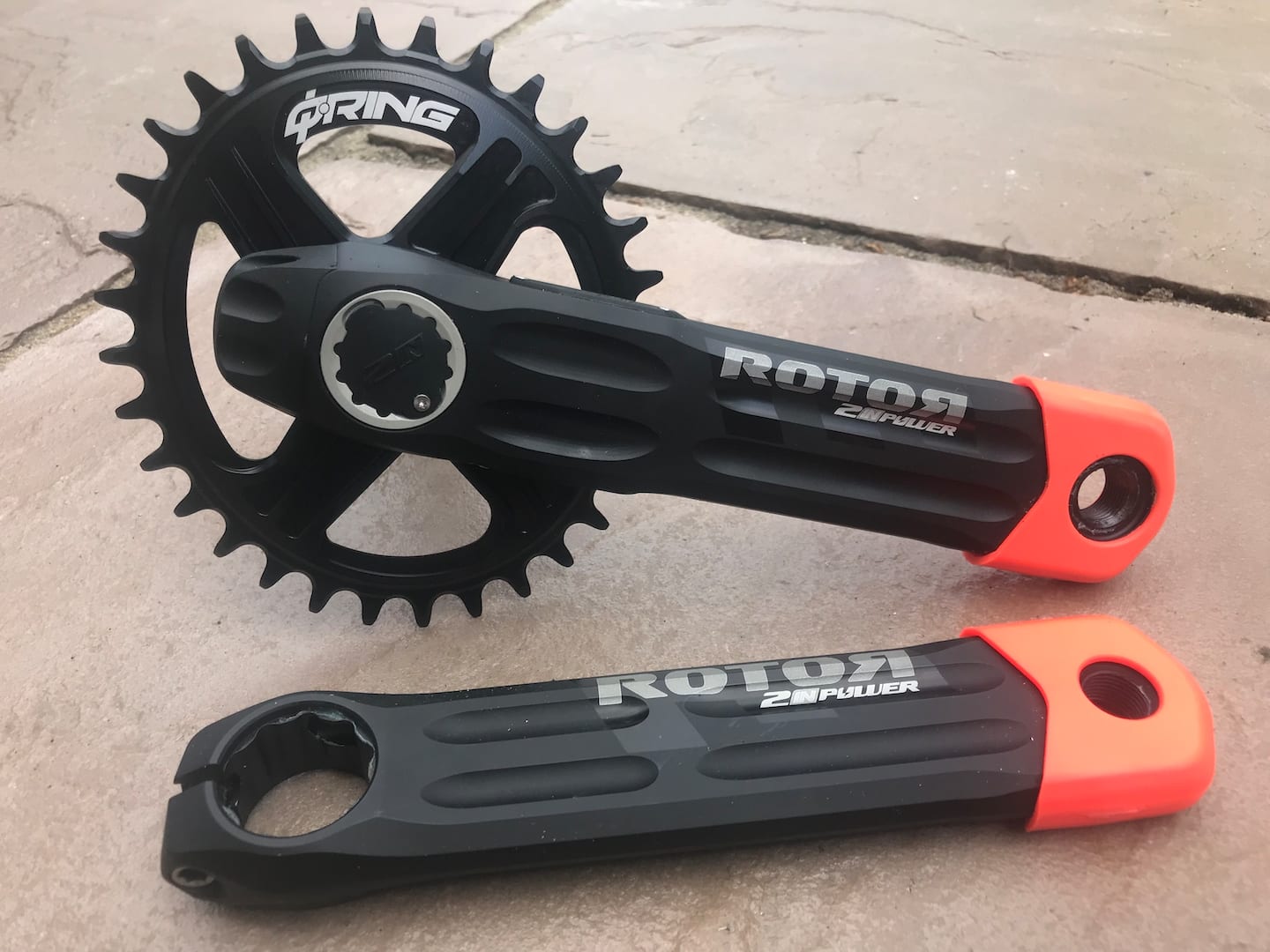
The Hardware
The Rotor MTB 2INPower DM is the only two-sided mountain bike specific power meter currently available.
There are a couple of advantages of a two-sided meter over a single-side one. Firstly, by measuring the power from each leg separately, a two-sided meter is more accurate than a single-sided one, which takes one reading and simply doubles it. Secondly, measures from each side will highlight any imbalances between legs and how these change in different circumstances.
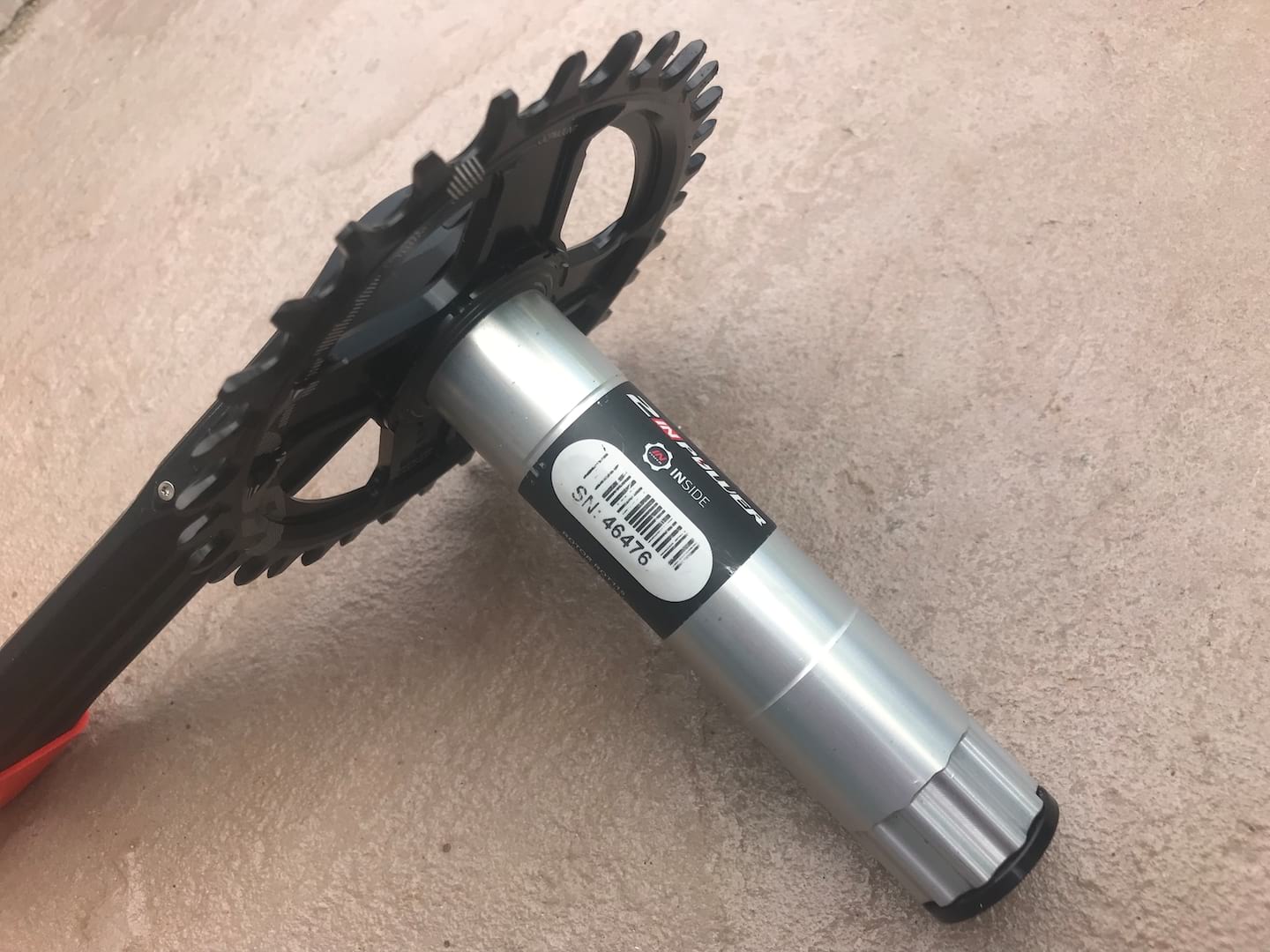
The 2INPower’s right-side meter is housed in the crank arm, while the left power meter sits inside the axle for protection against the elements. Unlike Rotor’s one-sided INPower cranks the 2INPower is only available with a 30mm axle and with Boost spacing.
Cranks are available in three different lengths: 165mm, 170mm and 175mm. They’re pretty stealthy looking in matt black and come with coloured rubber boots to protect the ends.
Our 165mm test set came with a 32t oval direct mount chainring (the DM in the name – both round and oval rings are available) and weighed in at 684g (and an additional 17g for the rubber boots). This puts them in line with Rotor’s claimed weight of 695g for a 170mm set.
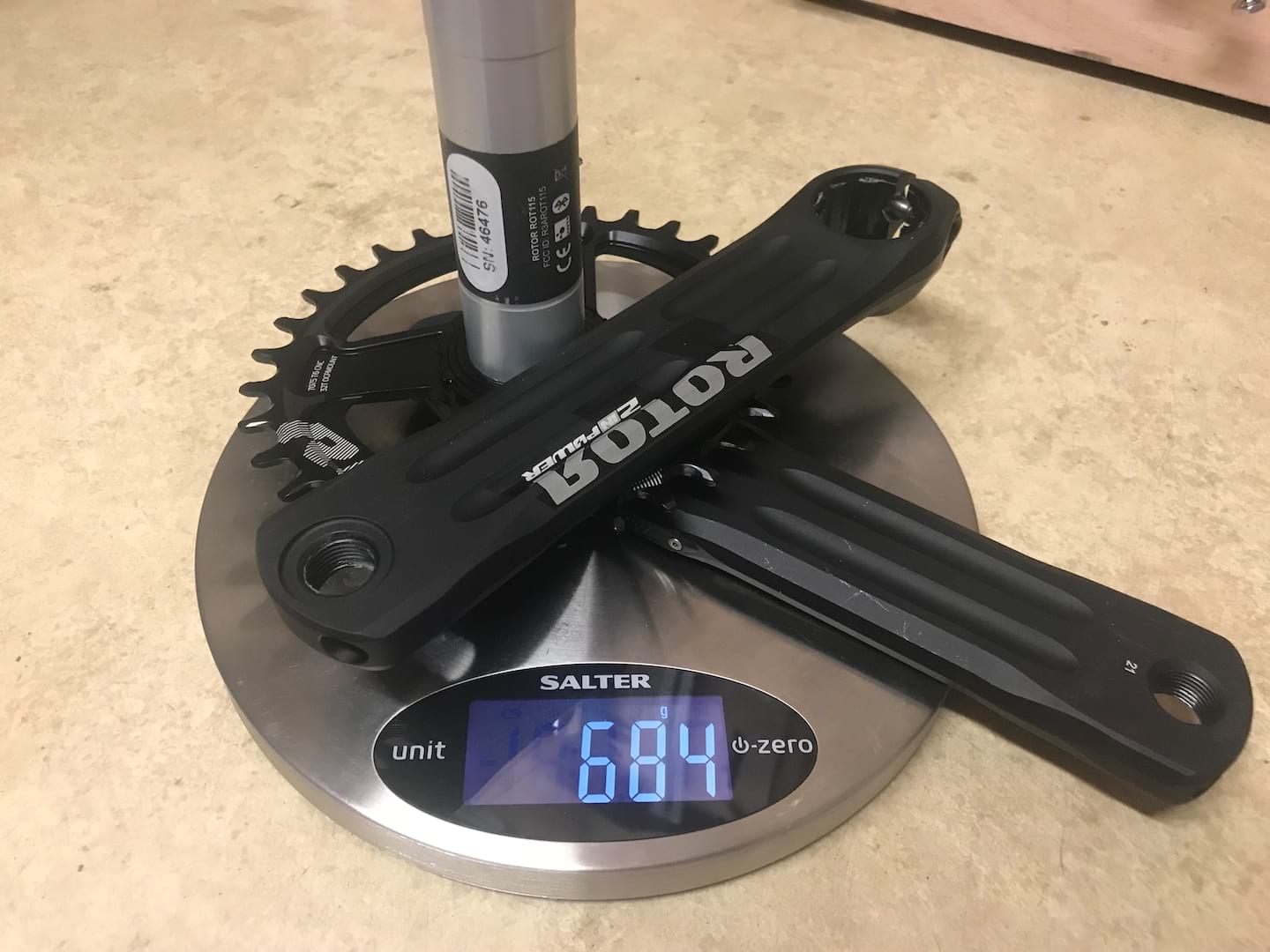
Installation
Fitting the two piece crankset is straightforward once you’ve sussed out what bottom bracket and spacers you need. For the ten months I’ve been using these cranks, I’ve had them fitted to two bikes – one with a PF92 shell, and one with a regular threaded shell. Rotor offers a range of BBs to fit most mountain bikes on the market, but they don’t supply one with the crankset. I used a Hope BB in both cases, and no issues.
Still, it’s worth taking a bit of care with installation as there is a specific sequence and torques for the pinch and centre bolts, and I can tell you that getting this wrong leads to much cursing and swearing whilst trying to tease them back out.
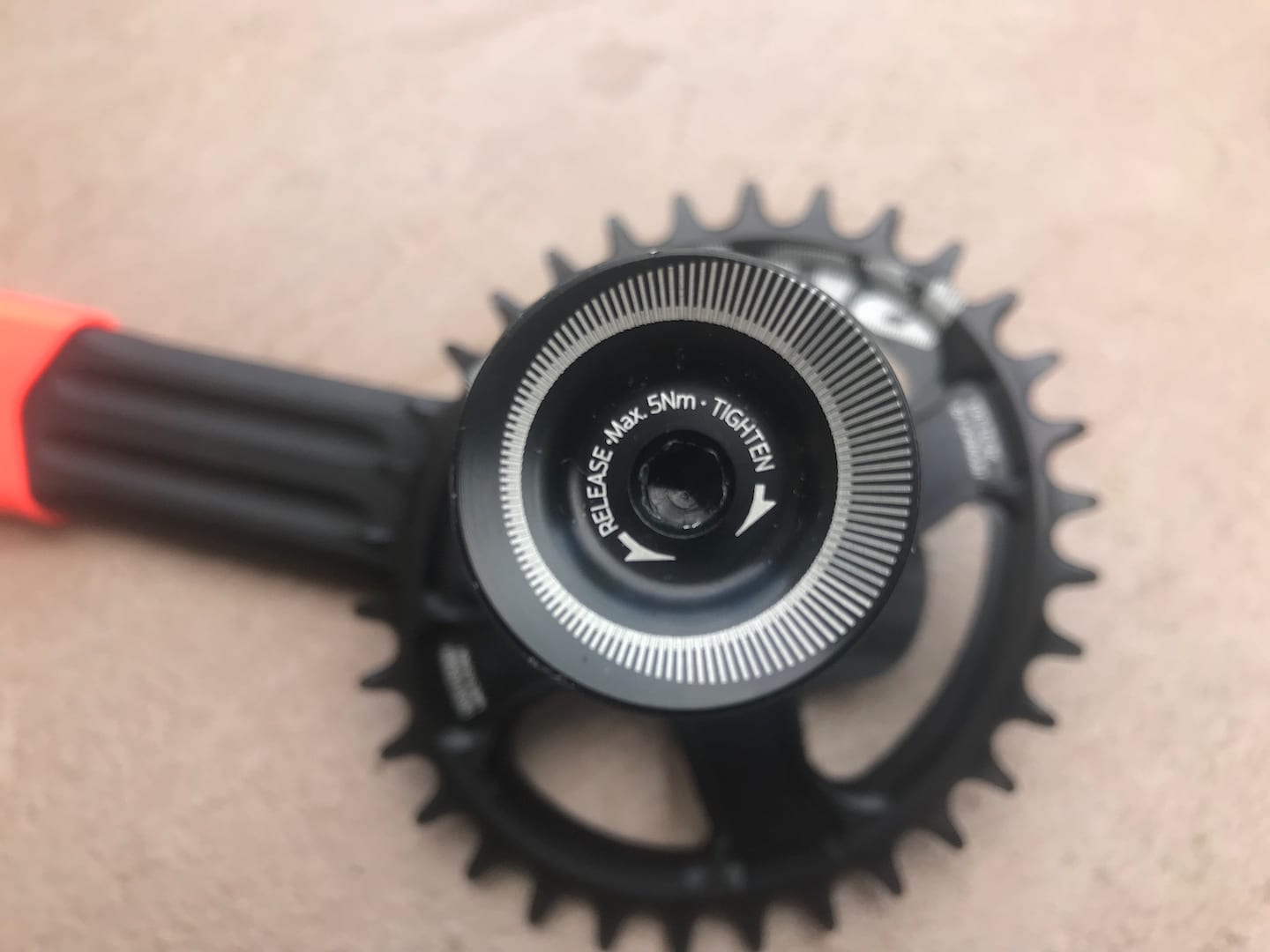
The 2INPower is powered by an internal rechargeable battery rather than a disposable coin one as with many other power meter cranks. The charge port sits under a thin plastic cover on the drive side axle and has a magnetic cable attachment which makes for easy charging.
One potential issue is the thin cover seal, which on a couple of occasions popped off its fixing screw when I moved it to attach the cable. This was solved with a bit of electrical tape, but isn’t really something you should have to do with a £1k crankset.
On the note of sealing, Rotor states the 2INPower cranks are rated to an IPX-7 level, which means you could dump the whole crankset under a metre of water for up to 30 minutes, and the electronic gubbins will apparently survive. I had no issues throughout testing in typically wet and muddy UK conditions, but for anyone looking to ride underwater for longer than half an hour though, these might not be the cranks for you.
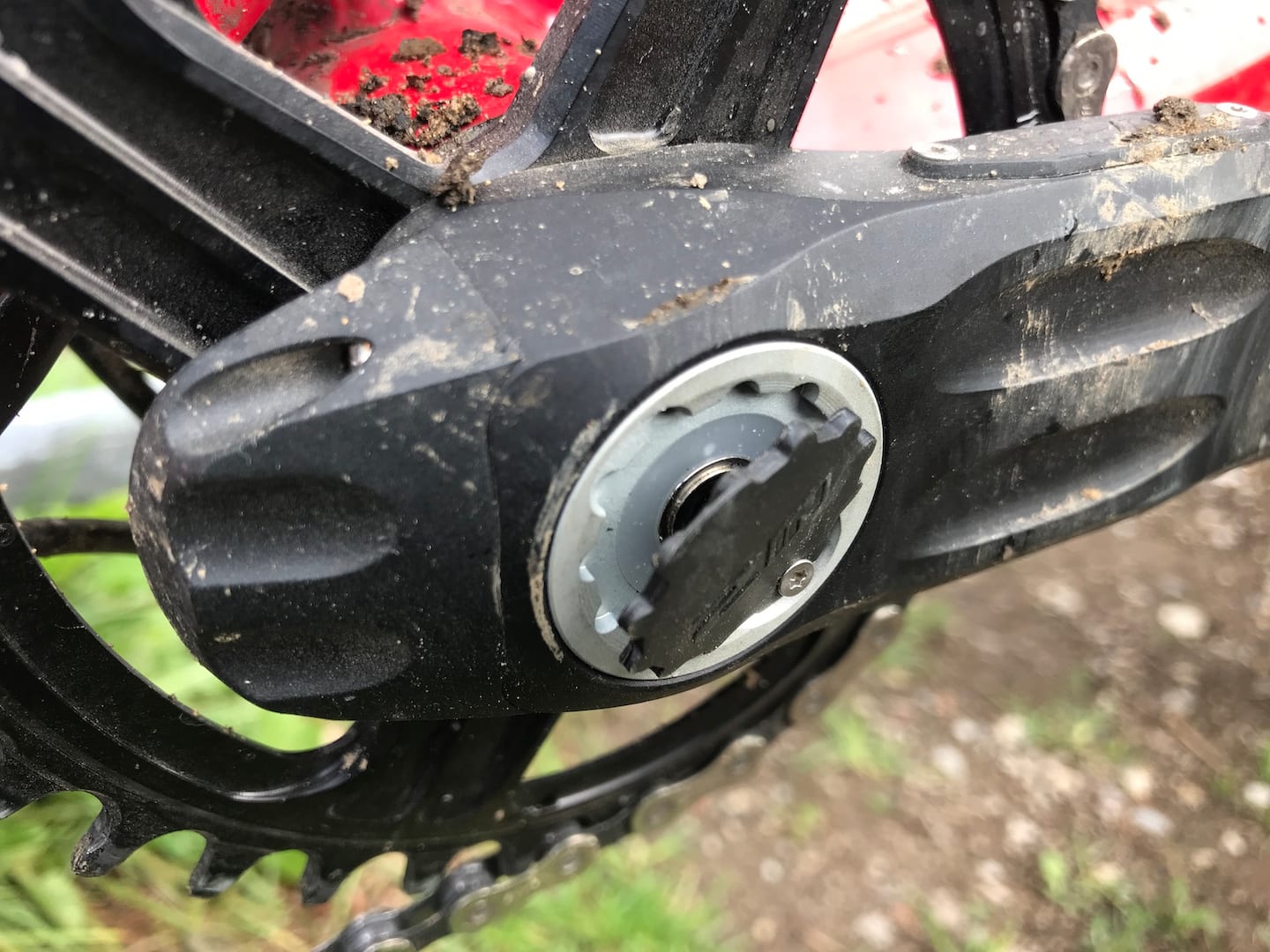
The Software
The 2INPower uses ANT+ or Bluetooth to connect with your bike computer, home computer and phone. Calibration is just a matter of pressing a few buttons on your device(s) and a quick spin of the pedals.
Slightly different data is collected and analysed by different devices. A bike computer (in my case a Garmin 1000) will record the usual power metrics including left / right balance without any additional software.
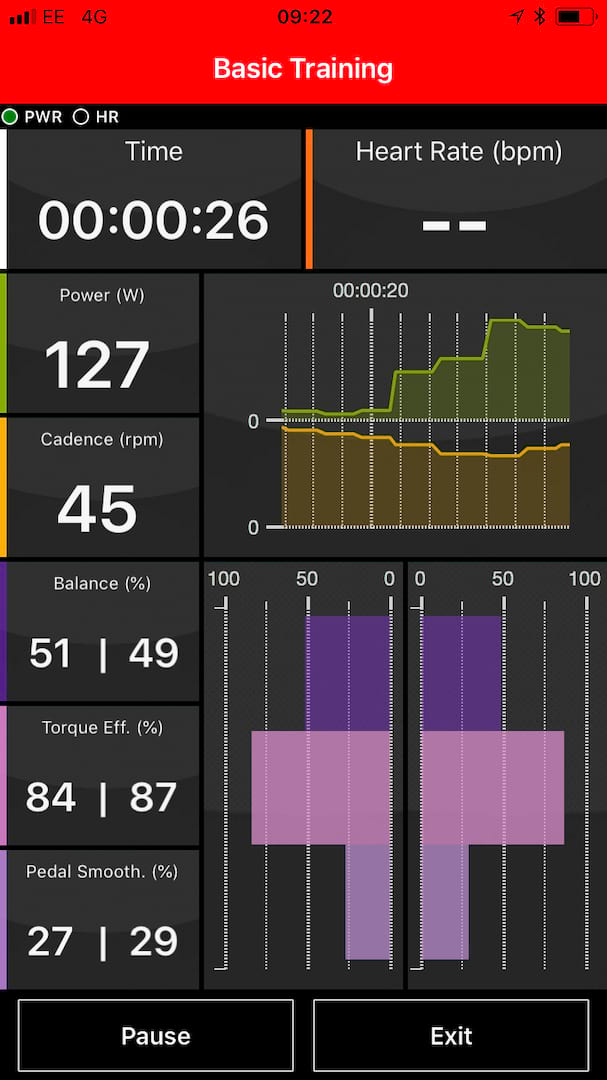
Rotor’s phone app (Android and iOS) covers the standard power data metrics, but also analyses your pedalling dynamics in much greater detail. This includes torque graphs and calculation of the optimum angle and position of your oval chainring – this data is only available through Rotor’s software.
Finally there’s a desktop program that will display and analyse the standard power data, live torque data and chainring position data. You can connect the cranks to your computer using Bluetooth or an ANT+ dongle.
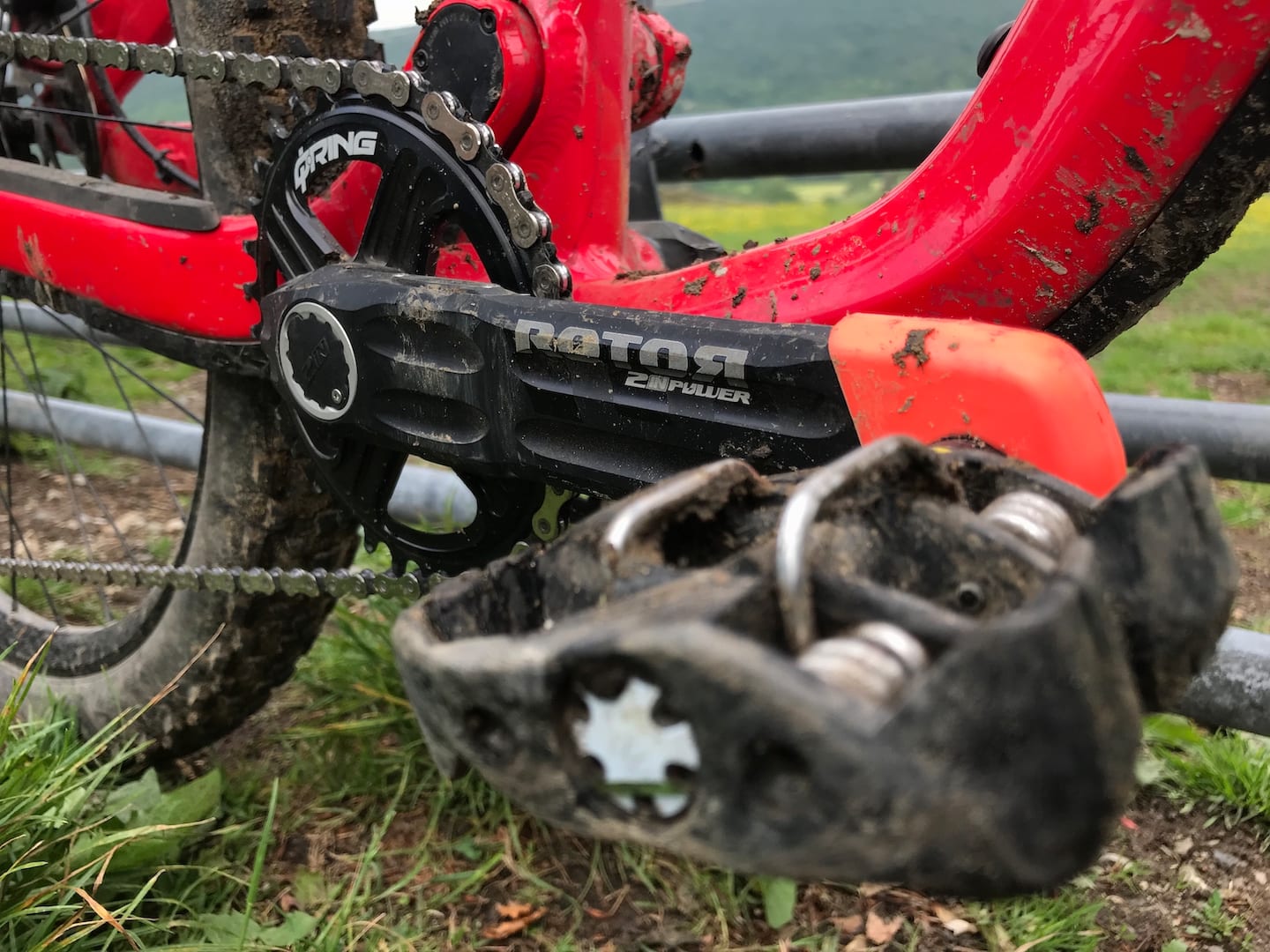
On The Trail
I had no trouble using ANT+ to connect up to my Garmin. From time-to-time my Garmin wanted me to recalibrate the cranks at the start of a ride but seemed to read accurately even when I didn’t bother. Given I’ve also encountered this with my road power meter I suspect it’s a Garmin thing rather than an issue with the Rotor cranks.
The majority of the time I relied on my Garmin to collect and analyse my data as it presents everything neatly and alongside all my other metrics, as well as being easy to sync with other programmes.
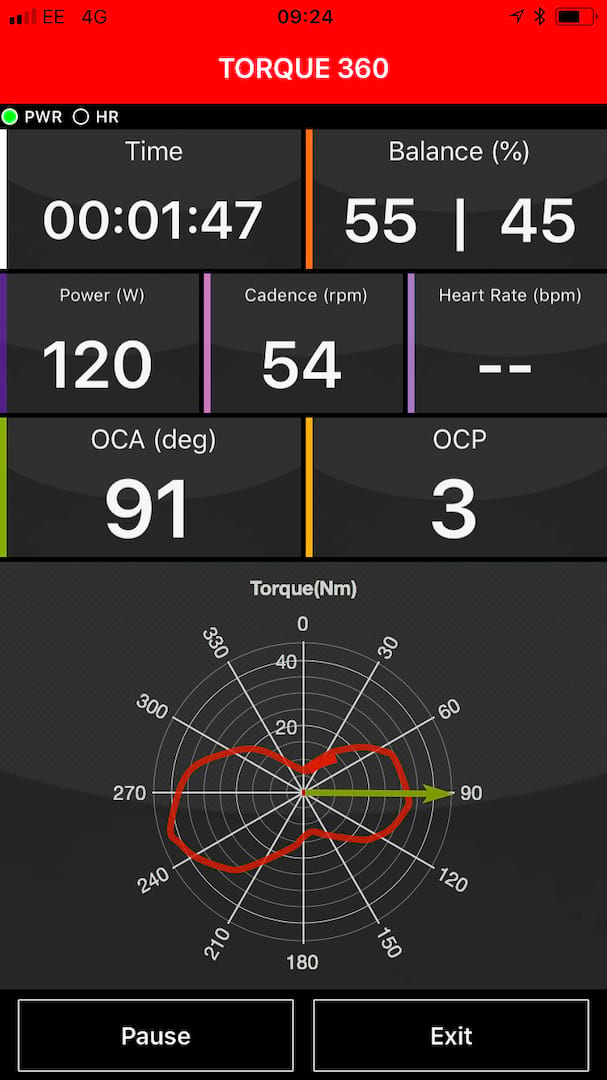
I found the phone app a bit more limited in its use. In terms of recording your ride, whilst all the usual metrics are collected, it only presents summary data and you can’t easily export this to another programme like Strava or Training Peaks so it’s much harder to see what is going on across a ride than what you’ll get with regular Garmin data. It also will draw a live torque graph but as this only displays as you pedal it’s not really much use when you’re out on the bike.
On a number of occasions when I used the app I couldn’t access the stored data so had no way of getting to the unique chainring position readings. I left it a few weeks and magically it just started to work properly, I suspect there was a software update although that isn’t evident in the version release history. Since this time I’ve had no further difficulties accessing the data and Rotor tells me that there are no known app problems. As this is only version 1.0 of the app I presume performance and utility will improve over time.
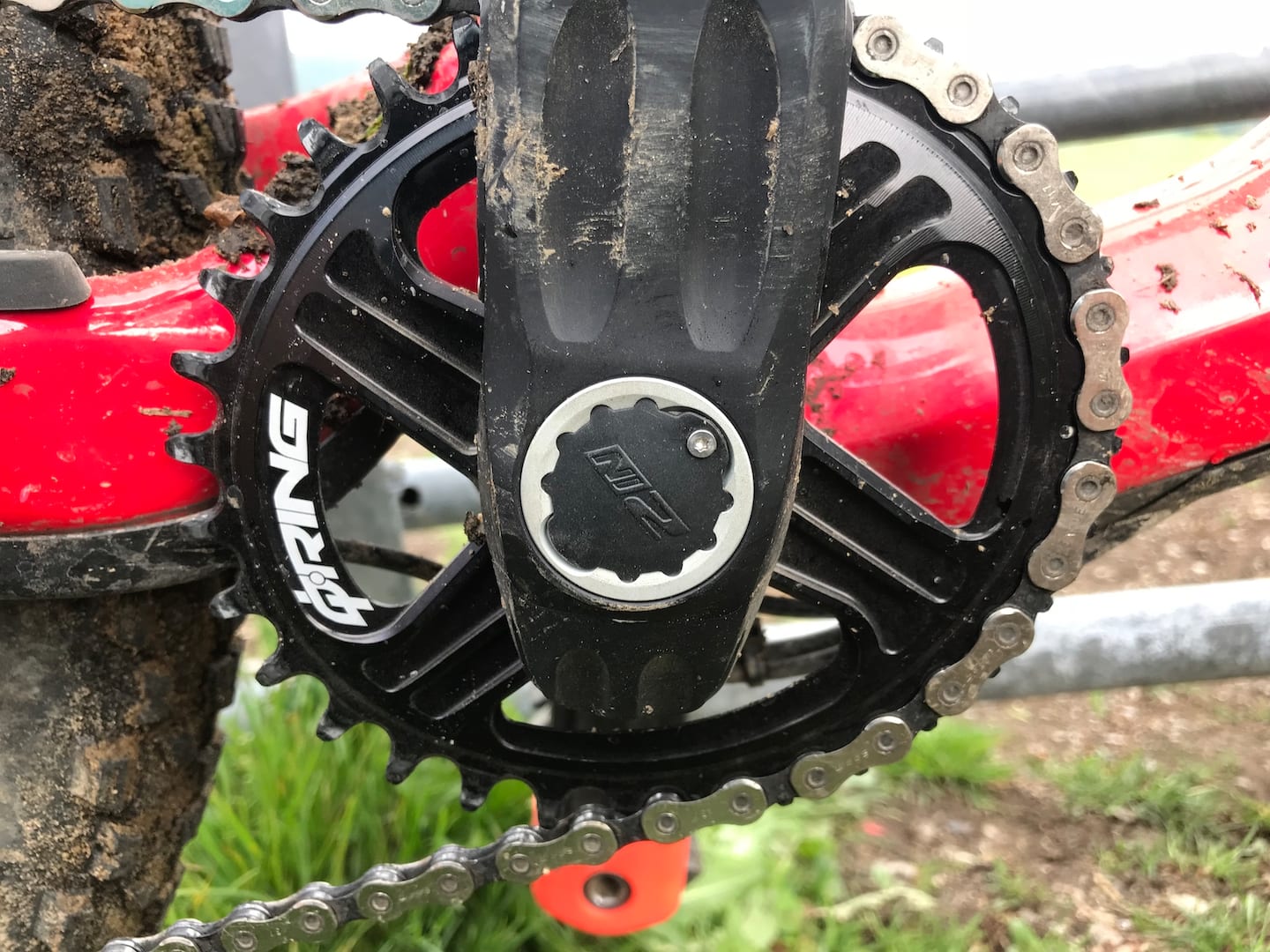
Finally on the data front, I had no success connecting up the cranks to my PC via Bluetooth, which could very well have been an issue with my PC. But given the PC programme is only any use if you’re sat on a turbo and has lots of technical data, which is more than I want, I wasn’t bothered about this.
Without running a couple of other meters at the same time it is difficult to say how accurately the 2INPower performs. But where I could compare, like correlating to my heart rate, and changes over a ride as I tired, the 2INPower gave readings as I’d expect them.
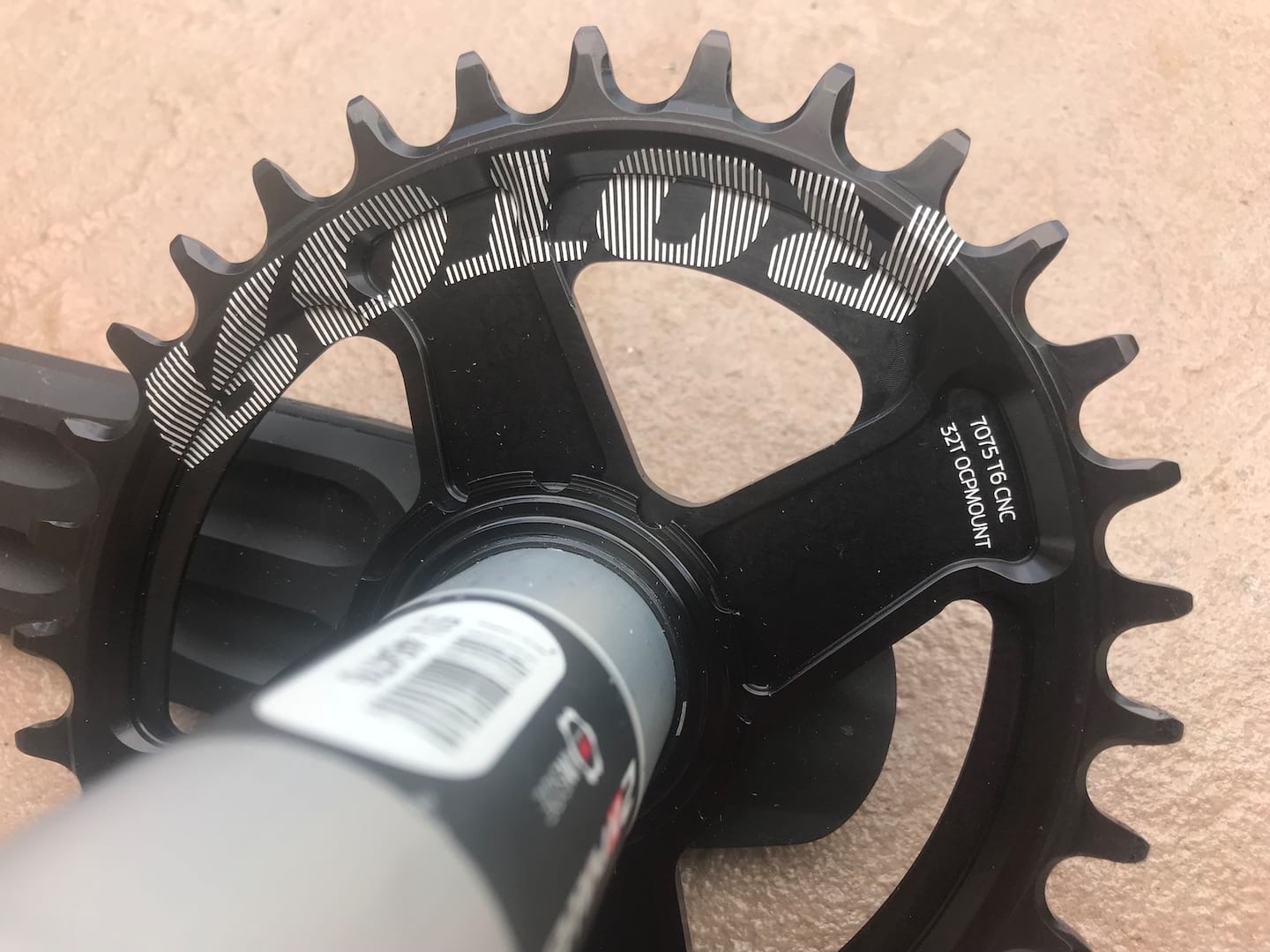
Having the left / right data has been really interesting and has given me lots to target in my training. I’ve had various injuries in the past to my right leg so always assumed this was the weaker. Surprisingly on easier pedalling this wasn’t the case and actually I had about 2% more power on that side. But once I fatigued or started to climb the balance switched over to it being 10% weaker. This is a big imbalance to reduce and using the 2INPower to monitor my progress is already proving very useful.
Compared to a round ring, riding with an oval ring was noticeably smoother, eliminating the feeling of picking up the pedal stroke up and over the top, which I stopped noticing after an hour into my first ride. On the basis that I could happily run a 32T ring on terrain where I’d normally ride a 30T, ring I’m definitely sold on the benefits.

The ring was set at a 90° angle when I first set up the cranks. After a few rides I tweaked it to 93° which the app told me was my optimum position. Changing the angle of the ring didn’t give a different feel or a measurable change in my power but I suspect this was because the optimum position for me was so close to where I’d started.
Finally I’ve had no issues with the reliability of the meter. It’s held its charge and provided consistent data. Bar the odd few seconds on a handful of rides, the signal didn’t drop out throughout the time I’ve had it on test.
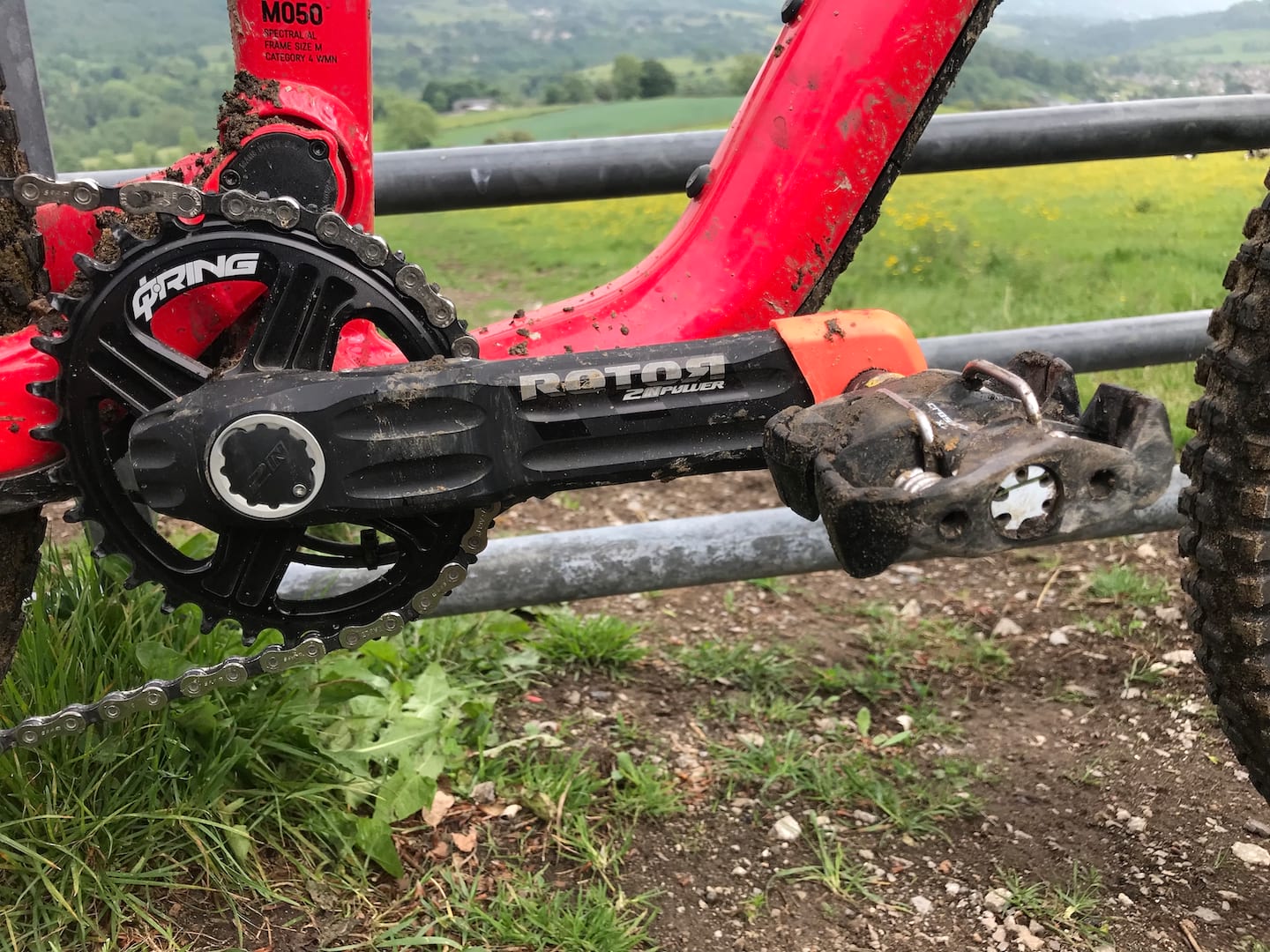
Overall
The Rotor 2INPower is a very high end bit of kit for those who like to take their training (and racing) seriously. By independently measuring power from each leg it gives you a whole lot more data than other available MTB power meters.
Combined with Rotor’s oval direct mount chainring, data from the 2INPower will guide you to optimise your power by identifying the ideal position of the ring based on your pedalling dynamics. If you’re persuaded by the arguments for an oval ring then making sure it’s optimally positioned makes perfect sense. If you’re a traditionalist, round chainrings are available too.






Excellent review.
Question is do I upgrade from my inpower rex crank?
Be interesting to compare the two .
@rone – thanks 🙂
Comparison-wise the 2IN gives you two sided meter, direct mount ring and rechargeable battery over the Rex. Plus they look ace.
As to whether you upgrade, I guess that depends how much Christmas money Santa brings you.
Rachel